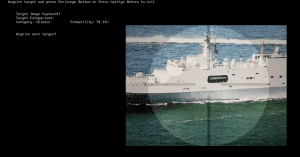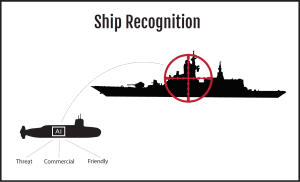Machine Learning Ship-Recognition System
Identify and respond to threats more effectively.
Identifying whether or not a vessel is a threat is a blend of art and science. Extensive training and practice are required for maximum proficiency. Rite-Solutions’ machine learning (ML) ship-recognition system increases the application of science using leading-edge technology to assist ship personnel with this age-old challenge.
By using existing training images and building artificial intelligence (AI) inference models using machine learning, Rite-Solutions Machine Learning Ship-Recognition System can help watch-standers do their jobs more quickly and with greater accuracy. Additionally, with the ability to enhance the inference capabilities in the field in real-time, this machine learning approach to ship recognition improves the Navy’s ability to identify ships and determine the best course of action.
- Help sailors to identify vessels more quickly and accurately
- Complement decision support tools, improve CO’s decision– making ability and confidence
- Scale and update ship-recognition capabilities across an entire fleet, in near-real time
- Leverage on-shore expertise
- Expand the number of viewpoints, using unmanned vehicles and other devices, to enhance visual recognition capabilities

A resident expert in a small form factor.
Historically, the processing power required for artificial intelligence and machine learning was too great to have on-board, or object inference latency was too slow to be effective. Imagine using decision support aids like Alexa and Siri on a submarine. Today, ultra-compact, low-power, edge-computing devices are specialized, small, and powerful enough to handle a trained neural network model while fitting in the palm of a hand and running off batteries. So AI capabilities can be integrated into command systems on a submarine, surface ship, unmanned underwater vehicle (UUV), drones, mines, and even handheld devices like binoculars.
Edge computing allows the Navy to keep data on-board, safe and secure. The system can recognize ships independently and does not need network connectivity to perform.

Images used to train sailors are also used to train the system’s machine learning model to recognize different vessels.
While using the system, sailors can “flag” unknown vessels/ Small-sized models (instead of images) can be shared throughout the fleet, while not interfering with real-time missions.
When subs return to port, “flagged” objects and images are securely transferred to on-shore personnel for further analysis and added to the model to further enhance recognition capabilities.
